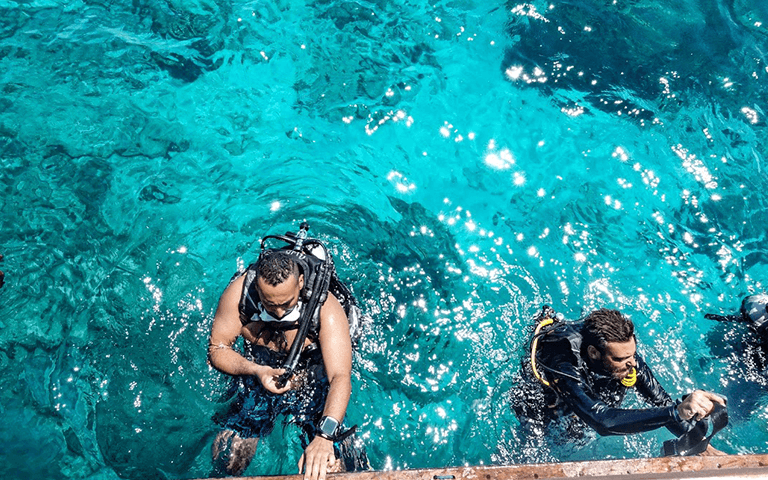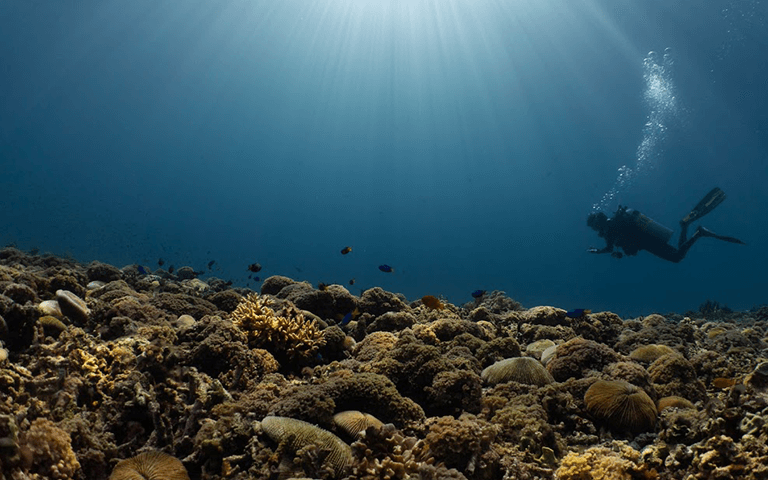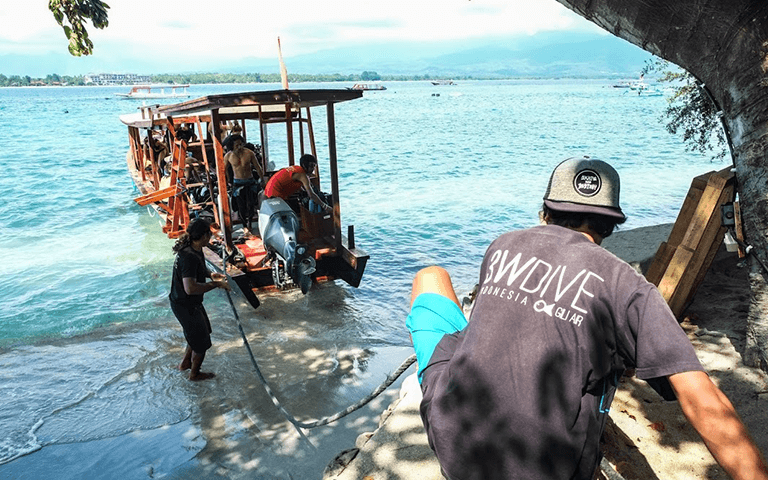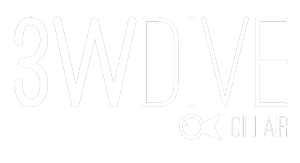by Margot McManus
Sometimes we encounter some confusion on how the dive industry is organized. Most people don’t even know that diving agencies such as PADI, SSI, and FFESSM actually fall under larger diving organizations / committees such as WRSTC and CMAS.
In this post, we’ll be explaining the basic differences and what you should know if you’re thinking about where and who you’d like to dive with.
We also briefly touch on the differences between technical and recreational diving, in case you were confused about that too.
In this post, we’ll be explaining the basic differences and what you should know if you’re thinking about where and who you’d like to dive with.
We also briefly touch on the differences between technical and recreational diving, in case you were confused about that too.
Scuba diving agencies vs. organizations
We’ll start with this info before moving forward to clear up any confusion because this is a bit of a confusing topic. To start off, scuba training agencies are not the same as scuba organizations or committees.
The two committees we’ll be discussing the differences between in this post are CMAS and WRSTC. They are responsible for setting the international standards for dive training. Diving agencies such as PADI, SSI, NAUI, FFESSM, ANMP, BSAC, etc. all fall under these standards.
We could go more in-depth into how exactly it all works on a systematic and hierarchical level. But as a recreational diver or even someone pursuing a diving career, you really don’t need to know more than the basics that we’ll be breaking down for you here.
If you do want more information, we’re linking the official websites for each organization in the next section.
If you do want more information, we’re linking the official websites for each organization in the next section.
What there is to know about the different scuba organizations
All scuba diving operations are split into two types of diving agencies: dive agencies that operate as a business (WRSTC), and agencies that operate mostly as nonprofit clubs (CMAS).
Commercial dive agencies such as PADI and SSI operate on the premise of diving like a business and follow diving standards set by the scuba organization called WRSTC. The WRSTC is designed to allow people to make a living out of scuba diving in the tourism industry, operating more as a business by selling certifications and offering recreational diving all over the world.
As an example, dive agencies such as FFESSM or ANMP (in France) are actually following diving standards set by a scuba organization called CMAS. The kinds of agencies that fall under CMAS standards operate most of the time as nonprofit diving clubs.
So rather than being in the business of selling certifications and specialties, this type of nonprofit organization / club offers opportunities for people to learn and practice scuba diving by joining them (for example, like joining a chess club) for very little money.
This is a different approach to teaching and practicing diving, as the people that run these clubs usually do this in their spare time and do it out of love for scuba diving with no financial gain.
Commercial dive agencies such as PADI and SSI operate on the premise of diving like a business and follow diving standards set by the scuba organization called WRSTC. The WRSTC is designed to allow people to make a living out of scuba diving in the tourism industry, operating more as a business by selling certifications and offering recreational diving all over the world.
As an example, dive agencies such as FFESSM or ANMP (in France) are actually following diving standards set by a scuba organization called CMAS. The kinds of agencies that fall under CMAS standards operate most of the time as nonprofit diving clubs.
So rather than being in the business of selling certifications and specialties, this type of nonprofit organization / club offers opportunities for people to learn and practice scuba diving by joining them (for example, like joining a chess club) for very little money.
This is a different approach to teaching and practicing diving, as the people that run these clubs usually do this in their spare time and do it out of love for scuba diving with no financial gain.
You should know that if you do train with a club, you will have to follow a schedule that is dictated by the club. This means that it could take a few months to get a certification. With a commercial dive shop, that same certification could be done in a few days. What you gain from a financial perspective you lose in time and flexibility training with a dive club.
Ultimately, no matter who you’re certified with you’re still eligible to dive with any agency you choose as they all recognize each other’s standards.


What are the differences in diving standards?
The main difference here is they both kind of operate on a pyramid learning system, just going opposite ways. With WRSTC agencies, the first level/open water course is designed to be very broad and to cover most of the information you’ll ever need to know as a diver. Then each certification past this gets more specific and is framed around specialties certifications.
CMAS levels are designed the other way around, where level 1 contains the minimum amount of information you need as a beginner diver. Each level after that will have more information, will be more intense with harder training.
There are also some differences in depth limits for divers between the two organizations.
CMAS levels are designed the other way around, where level 1 contains the minimum amount of information you need as a beginner diver. Each level after that will have more information, will be more intense with harder training.
There are also some differences in depth limits for divers between the two organizations.
WRSTC has a depth limit of 40 meters while diving on air and requires its divers (open water all the way to instructor) to follow dive profiles with no mandatory decompression stops.
CMAS allows its divers to go down to a depth of 60 meters while diving on air and allows dive profiles with mandatory decompression stops starting at level 2.
CMAS allows its divers to go down to a depth of 60 meters while diving on air and allows dive profiles with mandatory decompression stops starting at level 2.


Where around the world will my certification be recognised?
As long as your certification is with an organization that’s internationally recognized, you’re good to go. By this, we mean that that agency’s training program (PADI, SSI, FFESSM, AMNP, BSAC, etc.) has been ratified by one of the two scuba training agency organizations: WRSTC or CMAS.
Once you’ve determined where you’ll be doing most of your diving, you can see which agencies are available to you there, whether it’s your hometown or your vacation spot. Maybe there’s only commercial shops, only clubs, or maybe you’ve got both available to you. At least now you know the differences. Not to mention, to get diving insurance you need to be certified by a recognized training agency.
If you’re now asking yourself the question: How do I choose which scuba agency to train with?, we’ve laid that out for you too.
Once you’ve determined where you’ll be doing most of your diving, you can see which agencies are available to you there, whether it’s your hometown or your vacation spot. Maybe there’s only commercial shops, only clubs, or maybe you’ve got both available to you. At least now you know the differences. Not to mention, to get diving insurance you need to be certified by a recognized training agency.
If you’re now asking yourself the question: How do I choose which scuba agency to train with?, we’ve laid that out for you too.
What’s the difference between tech diving and recreational diving?
As we said, getting into all the technical details, no pun intended, isn’t the purpose of this post. So we’ll briefly touch on some of the differences between technical diving and recreational diving, just in case you were curious.
The main differences between rec and tech divers are depth and decompression limits. Recreational divers can dive all the same sites that technical divers can, but tech divers can go deeper and stay longer, which opens up some more opportunities for exploration. This is because tech divers are certified to use alternate breathing gases and different gear.
Where recreational divers can choose specialities for continuing education such as wreck diving or fish ID, tech divers can become certified to dive sidemount, mixed gas or rebreather, among other options.
The main differences between rec and tech divers are depth and decompression limits. Recreational divers can dive all the same sites that technical divers can, but tech divers can go deeper and stay longer, which opens up some more opportunities for exploration. This is because tech divers are certified to use alternate breathing gases and different gear.
Where recreational divers can choose specialities for continuing education such as wreck diving or fish ID, tech divers can become certified to dive sidemount, mixed gas or rebreather, among other options.
Your diving journey
Diving deeper with a more technical profile obviously isn’t for everyone. Most people enjoy diving in tropical waters as a recreational and relaxing activity. However, if you’re someone who’s looking into doing your divemaster training with us, 3WDive offers the sweet combination of diving in a tropical paradise while getting good experience working in the dive industry.
